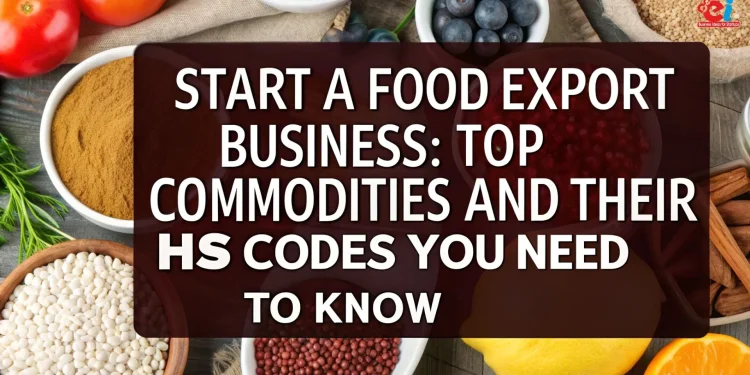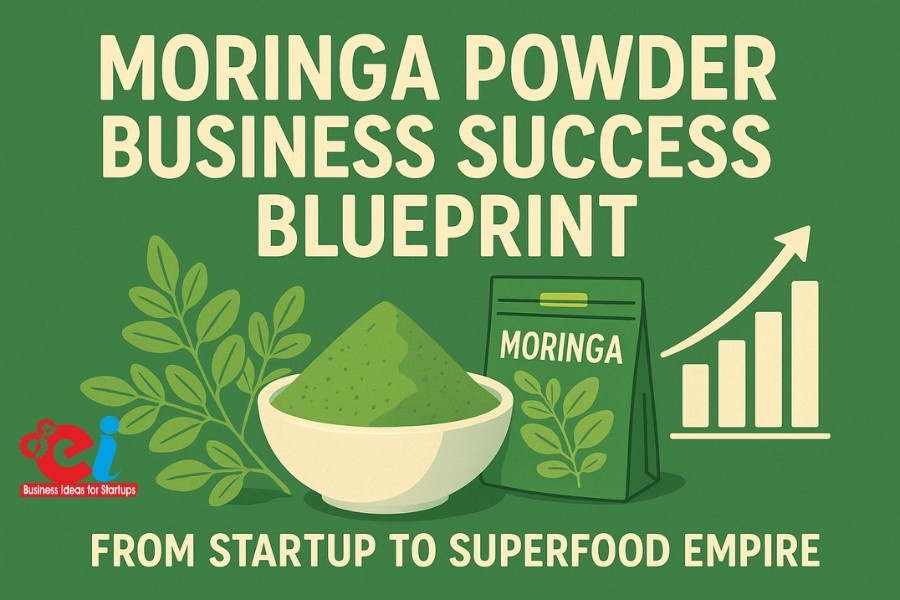Why Now Is the Right Time to Enter India’s Food Export Market
The food export business in India is booming like never before. The government is encouraging food processing and value addition which encourages global trade. India’s food products are in great demand internationally, ranging from spices to dairy, processed snacks, and even organic millets.
According to an April 2023 article in The Economic Times, “India’s Agri-Food Product Exports Cross $46 Billion Milestone”, India’s total exported agri-food products reached a staggering 46.43 billion dollars in 2023-24. Moreover, this includes a large share of processed goods, spices, dairy, and traditional ingredients which are witnessing huge demand in Asia, Africa, Europe, and America.
For entrepreneurs, researching product demand in foreign markets and understanding the Harmonized System (HS) codes relevant to those products is crucial for success. Additionally, HS codes are vital for export customs clearance, compliance, and availing customs incentives.
What are HS Codes (Harmonized System Codes): Your Guide to Export Success
HS codes (Harmonized System codes) are crucial numbers recognized globally for categorizing products for trade. As created by the World Customs Organization (WCO), HS Codes:
- Support international trade by categorically systemizing products
- Aid in the determination of tariffs, taxes, and duties
- Assist in ensuring regulatory compliance for exporters and importers
- Are necessary to claim government-subsidized export benefits
Each product is allocated a specific code — for example:
- Turmeric powder: 09103030
- Processed mango pulp: 20089910
Exporters need to strategically classify goods to optimize logistics, documentation, and obtain financial advantages.
Related: Why Now Is the Best Time to Launch a Food Startup in India
Leading Food Export Products from India with Their HS Codes
The data around commodities expands India’s food export ecosystem. The following table summarizes the most exported products along with their HS codes and usage-based export performance (MoFPI Annual Report 2022-23 and APEDA):
| Sr. No | Commodity Category | Examples | HS Code(s) | Export Value (2023-24) |
| 1 | Spices | Turmeric, Chili, Cumin, Pepper | 0904, 0905, 0909, 0910 | USD 4.74 Billion |
| 2 | Processed Fruits & Vegetables | Mango Pulp, Dried Veg, Fruit Juice | 2001 to 2009 series | USD 1.16 Billion |
| 3 | Dairy Products | Milk Powder, Ghee, Butter | 0401 to 0406 | USD 625 Million |
| 4 | Cereal Preparations | Breakfast Cereals, RTD Mixes | 1904 | USD 842 Million |
| 5 | Groundnuts | Shelled Peanuts | 1202 | USD 861 Million |
| 6 | Pulses | Chickpeas, Lentils, Moong Dal | 0713 | USD 687 Million |
| 7 | Jaggery and Sugar Products | Traditional Sweets, Candies | 1701 to 1704 | USD 431 Million |
| 8 | Cocoa & Chocolate Products | Chocolate, Cocoa Powder | 1806 | USD 184 Million |
| 9 | Beverages | Alcoholic Drinks, Fruit Beverages | 2202, 2203, 2208 | USD 375 Million |
| 10 | Misc. Processed Foods | Sauces, Pickles, Instant Mixes | 2103, 2106 | USD 1.33 Billion |
A. Spices: India’s Export Strength
India is the largest producer and exporter of spices in the world. With exports touching nearly USD 4.74 billion, spices contribute about 9% of India’s total agricultural exports.
- Key HS Codes: 0904 (Pepper), 0905 (Vanilla), 0909 (Seeds of Anise, Fennel), 0910 (Turmeric, Ginger)
- Top Markets: USA, China, Bangladesh, UAE, UK
B. Processed Fruits and Vegetables
Exporting products like mango pulp and canned mushrooms has great potential with around USD 1.16 billion in exports.
- Key HS Codes: 2001 to 2009
- Top Markets: Middle East, Russia, Southeast Asia
C. Dairy Products
India’s growth in dairy exports is small compared to other countries, but it’s rapidly increasing, particularly to the Middle East, Africa, and Southeast Asia.
- Key HS Codes: 0401 (Milk), 0405 (Butter), 0406 (Cheese)
- Forecast: Exports are projected to increase due to the demand for dairy in Indian cuisine, such as ghee and paneer
D. Cereal-Based Preparations
Ready-to-eat mixes, health bars, and snacks made from millet are all included in this category.
- Key HS Code: 1904 (Prepared Foods)
- Growth Drivers: The United States and Europe have shown interest in healthy, gluten-free, and millet-based food
E. Beverages
Exports of India’s traditional beverages like Aam Panna and Kokum drinks, as well as alcoholic beverages, are in demand.
- Key HS Codes: 2202 (Soft Drinks), 2203 (Beer), 2208 (Spirits)
F. Miscellaneous Processed Foods
With over USD 1.33 billion in exports, this category is the largest single segment. Exports include sauces, instant mixes, and ready-to-eat meals.
- Main Markets: USA, Canada, UK, and Australia
Forecast for Growth in Exports and Government Assistance
According to policy estimates, India’s food exports are expected to touch USD 100 billion by 2030. The projections are driven by:
- The surge in popularity of Indian ethnic, organic, and healthy foods globally
- Processing capacity rise due to Mega Food Parks and Agro-Processing Clusters
- Accelerated exports by APEDA, Spices Board, and MoFPI
- Current Free Trade Agreements with ASEAN, UAE, and EU
Key Government Schemes Supporting Food Exports
- PM Kisan SAMPADA Yojana: Provides capital grants for food processing units
- PM Formalization of Micro Food Enterprises: Aid for micro-level food processors
- Production Linked Incentive (PLI) for Food Processing: Encourages value-addition for export
Related: How PM Kisan SAMPADA Yojana Is Fueling India’s Agro-Industrial Revolution
Steps to Start Your Food Export Business
- Identify Your Product And Market: Analyze export data to spot potential demand
- Register with DGFT to obtain IEC (Import Export Code)
- Comply with FSSAI Regulations and international standards like ISO, HACCP etc.
- Employ Correct HS Codes in Documentation for appropriate customs clearance
- Reach out to APEDA or Spices Board for technical and marketing support
- Select Logistics Partners and Providers for cold chain services
- Leverage Government Schemes for funding and infrastructure support
Related Video On Food Processing
NPCS Role in Supporting Entrepreneurs to Establish Food Export Ventures
Niir Project Consultancy Services (NPCS) is well known in industrial consulting and helps entrepreneurs start businesses. NPCS prepares Market Survey cum Detailed Techno Economic Feasibility Reports which provide:
- Manufacturing processes
- Raw materials and procurement
- Plant layout
- Financial projections
They assess the feasibility for food export ventures and provide detailed support from idea development to implementation including market entry strategies.
India Continues to Have a Gateway to High Potential Opportunities
The potential niches in India’s food export industry are endless. With the proper understanding of the HS codes, and the right commodities such as spices, processed foods, dairy, and even beverages, one can penetrate a global market.
Food export businesses are now easier to set up than ever, because of government schemes, infrastructure support, as well as consulting firms like NPCS.
India has a global presence for their cuisine—Indian flavors are enjoyed by many around the world!


























